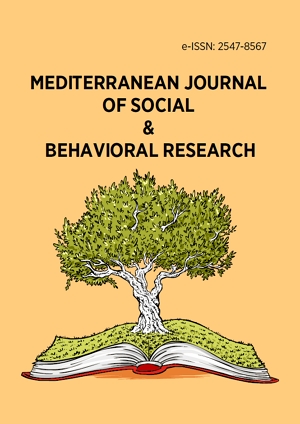Research Article
Scenarios of Multimedia Presentation of Material Cultural Heritage
More Detail
1 Graphics and Multimedia Laboratory, Faculty of Informatics and Statistics, University of Economics, Prague, CZECH REPUBLIC* Corresponding Author
Mediterranean Journal of Social & Behavioral Research, 2(2-3), December 2018, 19-22, https://doi.org/10.30935/mjosbr/8383
Published: 11 November 2018
OPEN ACCESS 1937 Views 884 Downloads
ABSTRACT
This work is the part of research which has aim to define methodology of using multimedia for communication of information content of cultural heritage. Methodology would be primarily used by small and medium enterprises or arts managers. In this paper we ask the question, what multimedia are best to use in certain situations, which lead us to understand the space between them. In this work we base on analysis of communication process, which tells us about the essential elements (initiator, recipient and contents). Main actors of this communication are owners, managers or curators. In the text we are presenting the categories of material cultural heritage, which represent the objects of communication. As the recipients we defined three possible target groups and their motivations to receive this kind of communication based on their expectations. The motivations are professional interest, education and relaxation. According to the cognitive theory of multimedia learning we studied and compared the parameters and connections of multimedia design and made possible scenarios how to create multimedia outputs including photography, graphics, video, animation and sound for presentation of material cultural heritage.
CITATION (APA)
Vondra, Z. (2018). Scenarios of Multimedia Presentation of Material Cultural Heritage. Mediterranean Journal of Social & Behavioral Research, 2(2-3), 19-22. https://doi.org/10.30935/mjosbr/8383
REFERENCES
- Amin, A., van Ossenbruggen J., Hardman, L., & van Nispen, A. (2008). Understanding cultural heritage experts’ information seeking needs. In Proceedings of the 8th ACM/IEEE-CS (pp. 39-47). New York: ACM. https://doi.org/10.1145/1378889.1378897
- Biocca, F. A. (1988). Opposing conceptions of the audience: The active and passive hemispheres of mass communication theory. Communication yearbook 11 (pp. 51-80). University of North Carolina, Chapel Hill. https://doi.org/10.1080/23808985.1988.11678679
- Byrnes, W. J. (2009). Management and the arts (4th ed.) Boston: Elsevier Focal Press.
- Communication Theory (2010). Berlo’s SMCR model of communication. Retrieved from http://communicationtheory.org/berlos-smcr-model-of-communication/
- Horny, S. (2013). Úvod do multimédií. Prague: Oeconomica.
- Lasswell, H. (1971). The Structure and function of communication in society In Schramm, W. & Roberts, D. F. (Ed.) The Process and Effects of Mass Communication (pp. 84-99). Urbana: University of Illinois Press.
- Mayer, R. E. (2009). Multimedia learning (2nd ed.). Cambridge: Cambridge University Press. https://doi.org/10.1017/CBO9780511811678
- Paivio, A. (1986). Mental representations: a dual coding approach. Oxford: Oxford University Press.
- Pechová, Z. (2011). Metody animace kulturně-historického dědictví (Doctoral dissertation). Retrieved from Information system of Masaryk university, Brno http://is.muni.cz/th/66118/pedf_d/
- Richards, G. (1996). Cultural tourism in Europe. Wallingford, UK: CAB International.
- UNESCO. (1972). Convention Concerning the Protection of the World Cultural and Natural Heritage. Retrieved from http://whc.unesco.org/en/conventiontext/
- Vaughan, T. (2008). Multimedia: making it work (7th ed.). New York: McGraw-Hill.

 The articles published in this journal are licensed under the CC-BY Creative Commons Attribution International License.
The articles published in this journal are licensed under the CC-BY Creative Commons Attribution International License.